|
|
|
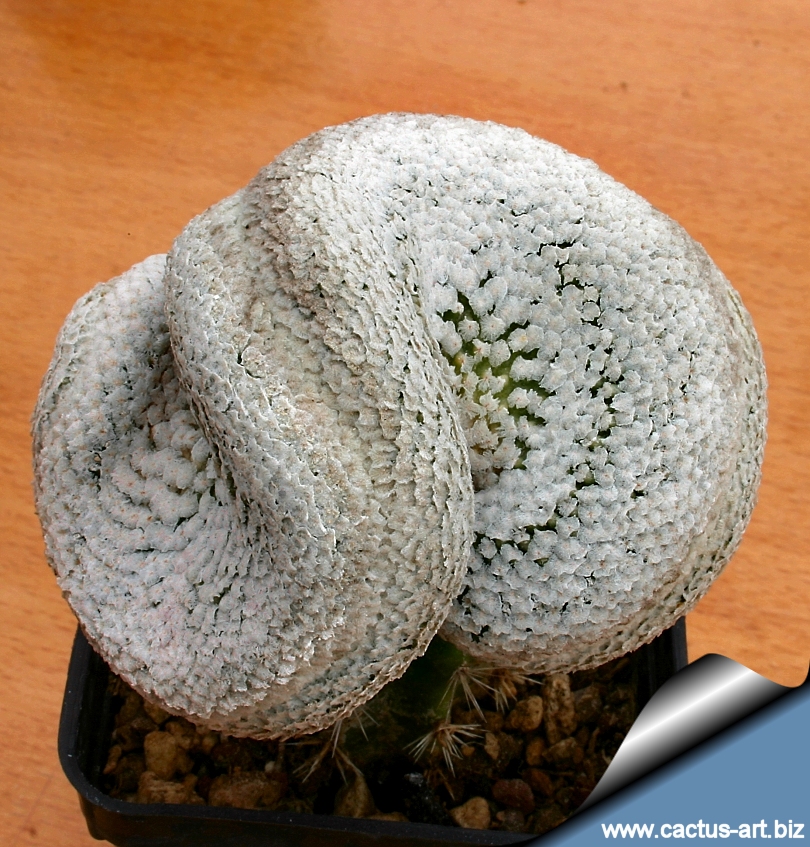
Turbinicarpus valdezianus forma cristata
|
|
Description:
The standard
Turbinicarpus valdezianus is one the smallest and slowest growing
Turbinicarpus with tiny feathery spines that obscure the body of the
plant, it is usually solitary but sometime form clusters of few branches.
Typically half of it is underground with a big tap root.
Forma cristata: The
crested form is still rare in cultivation.
It is covered by dense
feathery white spines, spreading flat around the areoles and the apex
completely concealed by the plumose spination.
Spines: Turbinicarpus valdezianus is a
pectinate species species, but the the pectinate spines are not in the
two neat rows as in
T. pseudopectinatus,
the ca. 25-30 spines, are dense, feathery and white, about 0.5 mm long,
spreading flat around the areoles.
Flowers: One to 5 diurnal, at plant apex, this species is found
scattered in small populations in several
locations and the colour of the flowers is variable ranging from
pinkish white to bright pink with darker
magenta or reddish-brown midveins.
Blooming season: Early bloomer (February - March).
|
|
 |
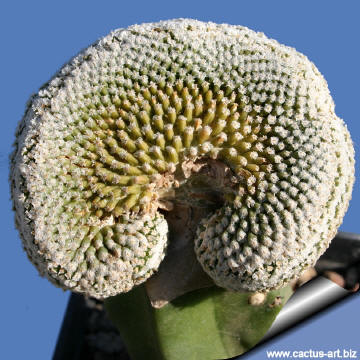 |
|
|
|
|
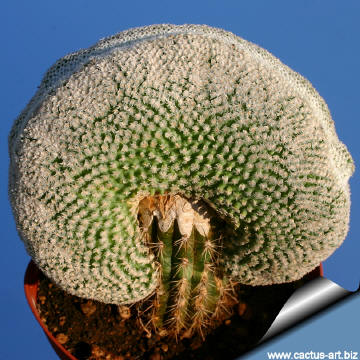 |
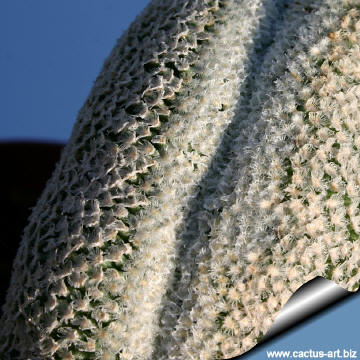
|
|


Advertising
|
|
|
|
|
|
Family:
Cactaceae (Cactus
Family)
Scientific Name:
Turbinicarpus valdezianus
(Möller) Glass &
Foster forma cristata
Origin:
Garden origin (Nursery
produced cultivar)
Conservation status: Listed in
CITES appendix I
Synonyms:
-
Pelecyphora valdeziana
forma cristata
-
Normanbokea valdeziana
forma cristata
-
Gymnocactus valdezianus
forma
cristata
-
Pediocactus valdezianus
forma cristata
-
Neolloydia valdeziana
forma cristata
|
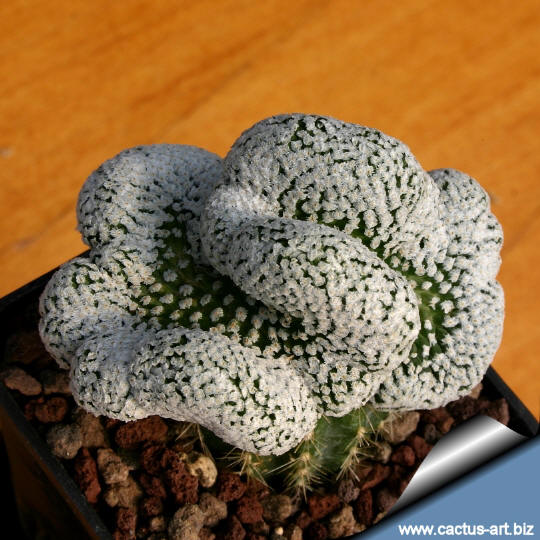
|
|
|
|
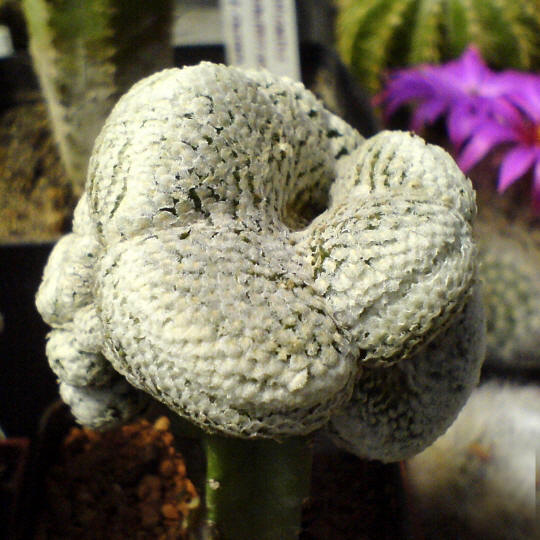
Photo and © copyright by Jot Vladimķr CZECH REPUBLIC
Cultivation: l though regarded as a choice and
difficult plant, in cultivation it is relatively easy. Keep dry in
winter or when night temperatures remain below 10° C, it is hardy to
-4°C for a short period, but for safe cultivation a minimum temperature of 5° C
would be recommended. These plants like
full sun where it obtains a compact natural looking, but some
summer shade in during the hottest hours of the day is beneficial.
Assure a good ventilation.
Propagation: Grafting, cuttings.
The
cause of cresting: The cause of cresting is not fully explained.
Biologists
disagree as to why some plants grow in this unusual form. Some
speculate that it is a genetic mutation. Others say it is the result of
a lightning strike or freeze damage. But whatever the stimulus, the
growth point of the stem has switched from a geometric point to a line,
which folds and undulates as the crest expands. Though these crested
cacti are somewhat rare (1 in 50,000 or less), cresting occurs naturally
and can be encountered in many
other cactus species.
|
|
Photo of conspecific taxa, varieties, forms and
cultivars of Turbinicarpus valdezianus:
|
|